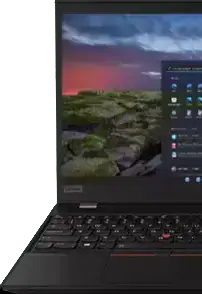What is compute unified device architecture (CUDA)?
CUDA is a parallel computing platform and programming model developed by NVIDIA®. With CUDA, you can use NVIDIA® GPUs for general-purpose processing, not just graphics. It enables you to harness the power of graphics processing unit (GPU) parallelism to accelerate various computational tasks, from scientific simulations to deep learning.
How does CUDA differ from traditional CPU programming?
Unlike traditional CPU programming, which is sequential, CUDA allows you to parallelize tasks by breaking them into smaller sub-tasks that can be executed simultaneously on the graphics processing unit (GPU). This parallelism is particularly beneficial for computationally intensive applications, as it leverages the thousands of cores in a GPU to perform tasks in parallel, leading to significant speedups compared to CPU-only implementations.
What types of applications benefit the most from CUDA?
CUDA is particularly powerful for applications that involve complex mathematical calculations and data parallelism. Tasks such as image and signal processing, scientific simulations, financial modeling, and machine learning training can see substantial performance improvements when implemented using CUDA. If you have computationally demanding tasks, especially those involving large datasets, CUDA can be a game-changer.
How does CUDA facilitate parallel processing?
CUDA enables parallel processing by allowing you to write code, called kernels, that can be executed in parallel across the many cores of a graphics processing unit (GPU). These kernels are designed to handle specific tasks, and you can launch them in parallel, making use of the massive parallel processing capability of GPUs. This approach is particularly effective for tasks that can be broken down into smaller, independent parts.
Can I use CUDA with any NVIDIA® GPU?
While most NVIDIA® GPUs support CUDA to some extent, the level of support can vary. Newer graphics processing units (GPUs) generally offer better support for the latest CUDA features. It's essential to check the CUDA compatibility of your specific GPU model on NVIDIA®'s official website to ensure optimal performance and compatibility with the CUDA toolkit and libraries.
What is the CUDA toolkit?
The CUDA toolkit is a comprehensive software development package provided by NVIDIA®. It includes libraries, debugging and optimization tools, and a compiler that allows you to develop, compile, and optimize CUDA applications. The toolkit also provides documentation and code samples to help you get started with CUDA programming. It's a crucial resource for anyone looking to harness the power of graphics processing unit (GPU) computing using CUDA.
How do I install the CUDA toolkit?
To install the CUDA toolkit, you can follow the installation instructions provided on NVIDIA®'s official website. Typically, you download the toolkit package that matches your operating system and graphics processing unit (GPU) architecture, and then follow the step-by-step instructions for installation. NVIDIA® regularly updates the toolkit, so it's advisable to check for the latest version to take advantage of new features and optimizations.
What role does the CUDA runtime play in GPU programming?
The CUDA runtime is a part of the CUDA toolkit and provides a set of APIs that you can use to manage graphics processing unit (GPU) devices, allocate memory, and launch CUDA kernels. It serves as a bridge between your application and the GPU hardware. When you run a CUDA application, the CUDA runtime takes care of managing the GPU resources and ensuring the proper execution of CUDA kernels, making GPU programming more accessible for developers.
Can I use CUDA with programming languages other than C/C++?
Yes, CUDA supports various programming languages beyond C/C++. NVIDIA® provides language bindings and extensions for languages like Fortran, Python, and MATLAB, allowing you to leverage the power of CUDA in a language you are comfortable with. This flexibility makes CUDA accessible to a broader range of developers and encourages innovation across different scientific and engineering domains.
What is GPU acceleration, and how does CUDA contribute to it?
Graphics processing unit (GPU) acceleration refers to the use of GPUs to offload and accelerate specific computations, reducing the workload on the CPU. CUDA plays a crucial role in GPU acceleration by providing a programming model that allows developers to harness the parallel processing power of GPUs. This enables applications to perform tasks much faster than traditional CPU-only implementations, making GPU acceleration a key strategy for optimizing performance in various domains.
How does CUDA contribute to machine learning and deep learning?
CUDA has had a profound impact on the field of machine learning and deep learning. Its ability to parallelize computations has made it instrumental in training and running deep neural networks. Frameworks like TensorFlow and PyTorch utilize CUDA to accelerate the training of complex models on NVIDIA® GPUs. If you're involved in machine learning or deep learning, understanding and using CUDA can significantly speed up your model development and training workflows.
Can I use CUDA for real-time graphics rendering?
Yes, CUDA can be utilized for real-time graphics rendering. By parallelizing the rendering pipeline, CUDA enables faster and more efficient processing of graphics data. This is particularly beneficial for applications that require real-time rendering, such as video games and simulations. Leveraging CUDA in graphics programming allows you to take advantage of the parallel processing capabilities of modern graphics processing units (GPUs), resulting in smoother and more responsive graphics.
Can CUDA be used for general-purpose computing tasks?
Yes, CUDA was designed with general-purpose computing in mind. Its flexibility allows you to apply graphics processing unit (GPU) acceleration to a wide range of computing tasks beyond graphics and scientific simulations. Whether you're working on data processing, cryptography, or any computationally intensive task, CUDA provides a platform for harnessing the power of GPUs to accelerate your applications.
How does CUDA handle memory management in graphics processing unit (GPU) programming?
CUDA provides a memory hierarchy that includes global memory, shared memory, and local memory on the GPU. You allocate and manage memory using CUDA application program interfaces (APIs), and you can explicitly control data movement between the CPU and GPU. Efficient memory management is crucial for maximizing performance, and CUDA gives you the tools to optimize data transfers and minimize latency, ensuring that your GPU-accelerated applications run smoothly.
What is the significance of warp and thread divergence in CUDA programming?
In CUDA programming, a warp is a group of threads that execute the same instruction simultaneously. Thread divergence occurs when threads within a warp take different execution paths. It's essential to minimize thread divergence for optimal performance, as divergent threads within a warp may need to serialize their execution. Understanding and managing warp and thread divergence is key to writing efficient CUDA kernels and maximizing the parallel processing capabilities of the graphics processing unit (GPU).






